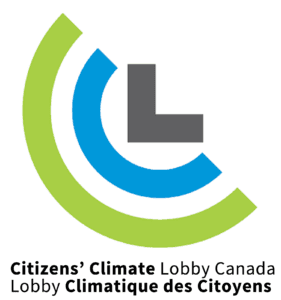CONTACT: cathy@citizensclimatelobby.ca , 705-929-4043
One year after Sandy’s wake-up call, it’s time to get moving on a carbon tax
To minimize the risk of future disasters, we need a market-based solution to reduce greenhouse gas emissions
One year after Sandy, America’s loudest wake-up call on climate change, many places along the New Jersey coast are still struggling with recovery efforts. For U.S. taxpayers, the storm’s price tag is more than $50 billion. The Port of Authority of New York and New Jersey estimates damage from Sandy cost the agency $2.2 billion
All of which begs the question: How many more Sandys can any country recover from?
If we choose to continue along the path of unabated greenhouse gas emissions, the limits of our adaptability will probably be reached by mid-century. Though hurricanes will happen with or without the presence of climate change, warmer temperatures affect the intensity and behavior of those storms.
Consider the factors that affected Sandy:
-
The record ice melt in the Arctic last year played havoc with the jet stream, creating conditions that led to the blocking pattern over Greenland that steered Sandy west into the Northeast mainland rather than out to sea. These conditions also helped spawn the Nor’easter that merged with Sandy.
-
Sea surface temperatures off the Carolinas and Mid-Atlantic remained warm into the fall, allowing Sandy to retain its energy as it moved up the coast.
-
Global warming-induced sea level rise gave Sandy a higher platform for the storm surge that inundated New York and New Jersey. Sea levels in New York harbor are 15 inches higher than they were 150 years ago. Most scientific reports predict a sea level rise of up to 3 feet by the end of the century in a business-as-usual scenario.
Covering losses incurred by Sandy and other warming-enhanced disasters has become a great concern for the insurance industry. In a recent blog on their Web site titled Silencing the Sceptics, Lloyds of London’s head of exposure management, Trevor Maynard, said, “Climate change acts as a ‘threat multiplier' It doesn’t necessarily cause events to happen, but it does make them worse.”
Lloyds and other insurers have banded together for an initiative called ClimateWise, a leadership group to drive action on climate change risk. A brief video (below) provides an overview of this initiative.
Wildfires out West also worry companies that have to cover losses when homes are reduced to ashes, and the insurance industry is pointing to climate change as a factor that increases risk. A recent report from Lloyds, Wildfire: A Burning Issue for Insurers, noted, “Future climate change is expected to increase average global temperatures and, in some regions, drought frequency and severity will increase. This could lead to substantial increases in fire probability and potentially area burned.”
What the science tells us
In late September, the Intergovernmental Panel on Climate Change released its first report from the 5th Assessment, finding that scientists are now 95 percent certain that Earth is warming and humans are responsible. According to the report, the only scenario under which global warming by the end of the century is limited to 2 degrees Celsius or less is one in which greenhouse gas emissions are substantially reduced.
In its report, the IPCC also took the extraordinary step of warning that our civilization has a “carbon budget.” Using the dawn of the industrial revolution as the starting point, we cannot exceed 1 trillion tons of CO2 emissions and stay within manageable limits of global warming. We have already “spent” half that budget and are on track to reach the trillion-ton limit by 2040.
Andrew Freedman of Climate Central writes this estimate may be optimistic:
“What’s worse is that the budget may even be smaller since emissions other than carbon dioxide (CO2) also contribute to global warming. Factoring in some of these shorter-lived climate pollutants, such as nitrogen oxide and soot, brings the overall cumulative budget down from 1 trillion tonnes of carbon to 800 billion tonnes.
“With that in mind, the remaining budget is even smaller, leaving just 269 billion tonnes of carbon left. To stay within the budget, global emissions would have to peak by 2020, and then become negative – with more carbon being taken out of the atmosphere by plants and the oceans than is put into the air each year — by 2090.
“The IPCC report also said that a possible release of greenhouse gases from thawing permafrost and methane hydrates — which are “not accounted for in current models” — would shrink the remaining budget even further.”
Making the task of staying “under budget” more daunting is the fact that there are 2,795 gigatons of carbon in the known reserves of coal, oil and gas, five times the remaining budget. Most of those reserves will have to stay in the ground to have any hope of preserving a climate like the one that has sustained human civilization for thousands of years.
The path to climate sanity
Canada's climate policy has been to follow the US climate policy.
With Congress having failed to deliver a market-based solution to reduce greenhouse gas emissions, President Obama took the lead this past summer with the announcement of his Climate Action Plan. The most significant component of the President’s plan is to have the Environmental Protection Agency regulate emissions from new and existing power plants, which has drawn major opposition from the fossil fuel and utility industries as well as Republicans in Congress. EPA authority to regulate greenhouse gas emissions at power plants also faces a challenge in the Supreme Court, which has agreed to hear arguments early next year.
Rather than complain about new EPA regulations, opponents of costly regulations should consider a market-based alternative supported by a number of conservatives – a revenue-neutral carbon tax that gives proceeds back to households.
A wide range of economists believes that the market, rather than the government, is the best vehicle for solving the climate problem. But the market fails when there’s a distortion in the price of something. Such a distortion exists with fossil fuels, whose price does not reflect the cost of damage done to society – health costs related to air pollution, security costs related to imported oil, extreme weather damage made worse from climate change. Adjust the price to account for those costs, with a gradually-increasing carbon tax, and the market will work its magic. As renewable energy like solar and wind becomes competitive with and eventually cheaper than coal, oil and gas, the economy will transition to clean energy and greater fuel efficiency, lowering greenhouse gas emissions.
Citizens Climate Lobby suggests a tax that starts low — $15 per tonne of CO2 – and ramps up aggressively, adding $10 per tonne each year. For the sake of simplicity, the tax should be applied as far upstream as practical. Distributing the carbon tax revenue back to the public, preferably through equal payments to all households, would give consumers the additional income to deal with price increases associated with the carbon tax.
In order to protect Canadian businesses from unfair competition – and to keep jobs from going overseas – the carbon tax should include border adjustment tariffs on imports from nations that don’t have equivalent carbon pricing. Rather than enrich the Canadian treasury, other nations will want to implement their own carbon tax and keep that revenue within their borders. Such tariffs should comply with World Trade Organization rules, as they would only be for the purpose of maintaining a level playing field.
The one-year anniversary of Sandy is a stark reminder of the consequences we face in the future if we blow past the “carbon budget.” Politicians in Canada and the USA must come together on a revenue-neutral carbon tax that provides an economy-wide, market-based solution to keep us under budget.
Conservatives who support a revenue-neutral carbon tax
-
David Frum, a Canadian and former speech writer for president George W. Bush; "More jobs and growth; reduced deficits without raising income taxes; lower taxes for middle-class families … one policy instrument can do it all. What's not to love about a carbon tax?"
-
Art Laffer, former Reagan economic adviser: “Reduce taxes on something we want more of–income–and tax something we arguably want less of–carbon pollution. It’s a win-win.”
-
Greg Mankiw, economic advisor to George W. Bush and Mitt Romney: A “proposed carbon fee — or carbon tax, if you prefer — is more effective and less invasive than the regulatory approach that the federal government has traditionally pursued.”
-
Andrew Moylan, R Street Institute: “A revenue-neutral carbon tax coupled with regulatory reform could achieve the same goal the president seeks to address without expanding government or contracting economic opportunity.”
-
Gary Becker, Nobel laureate economist: “A carbon tax would encourage producers and consumers to shift toward energy sources that emit less carbon… And revenue neutrality means that it will not have fiscal drag on economic growth.”
Diana Carney from Canada 2020 is part of a growing group of progressive Canadians who are making the compelling case for a pricing carbon. Canada 2020 is hosting their second climate change conference in Canada in 2013 on November 6 in Ottawa called The Politics of Climate Change and Climate of Politics.
Integration Climate and Energy Policies
Observations from an August 2013 Nanos poll were that North America’s energy market is "de-facto integrated", but public policy is often fragmented and disjointed. The Nanos's study was comprised of original public opinion research and in-depth interviews over several months with key stakeholders and advocacy groups in the United States. It alluded to the potential causes of strained relationships between Canada and the USA particularly around the Keystone XL pipeline.
"We are desperately in need of a forthright dialogue between Canada and the United States in terms of carbon policy and the environment," said pollster Nick Nanos in an interview from Washington, D.C.








